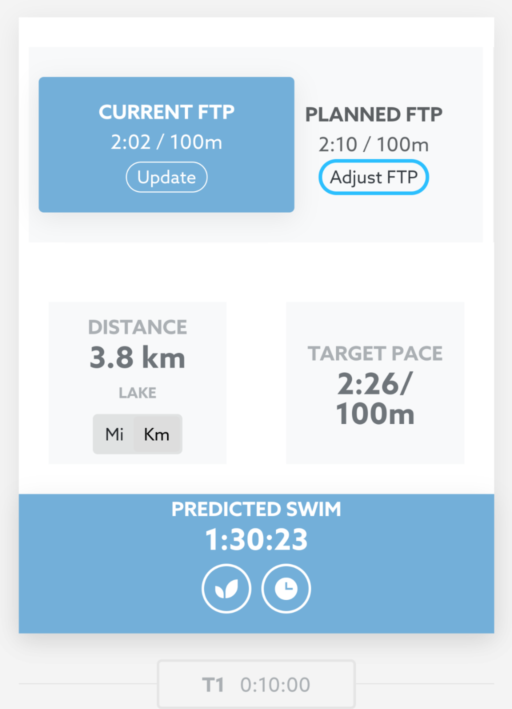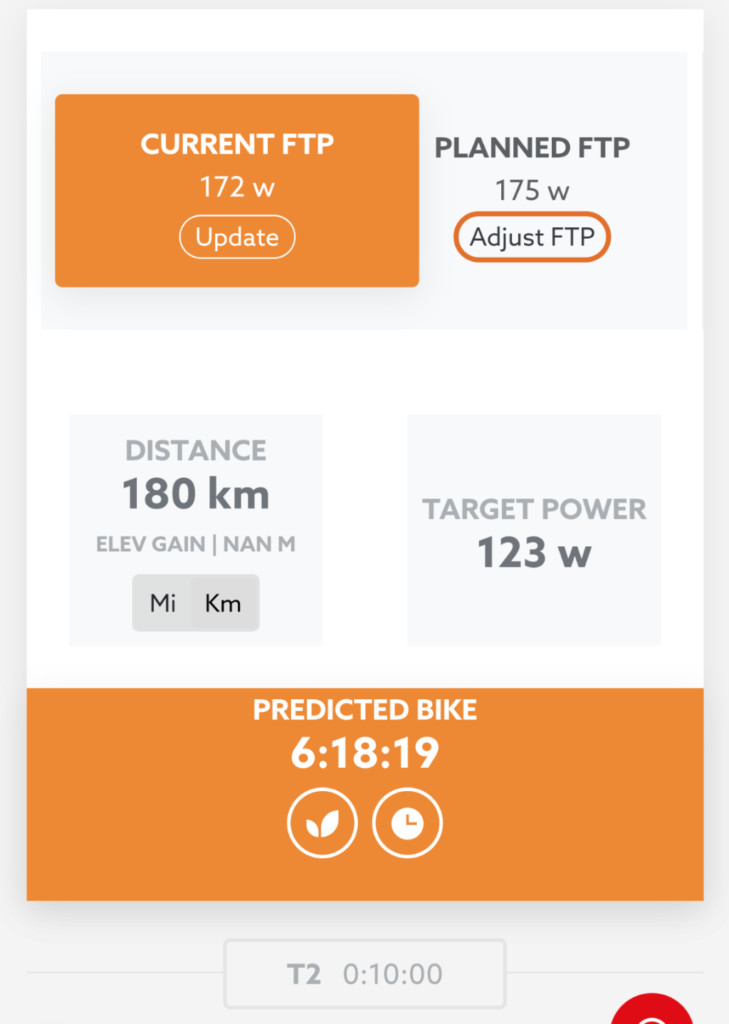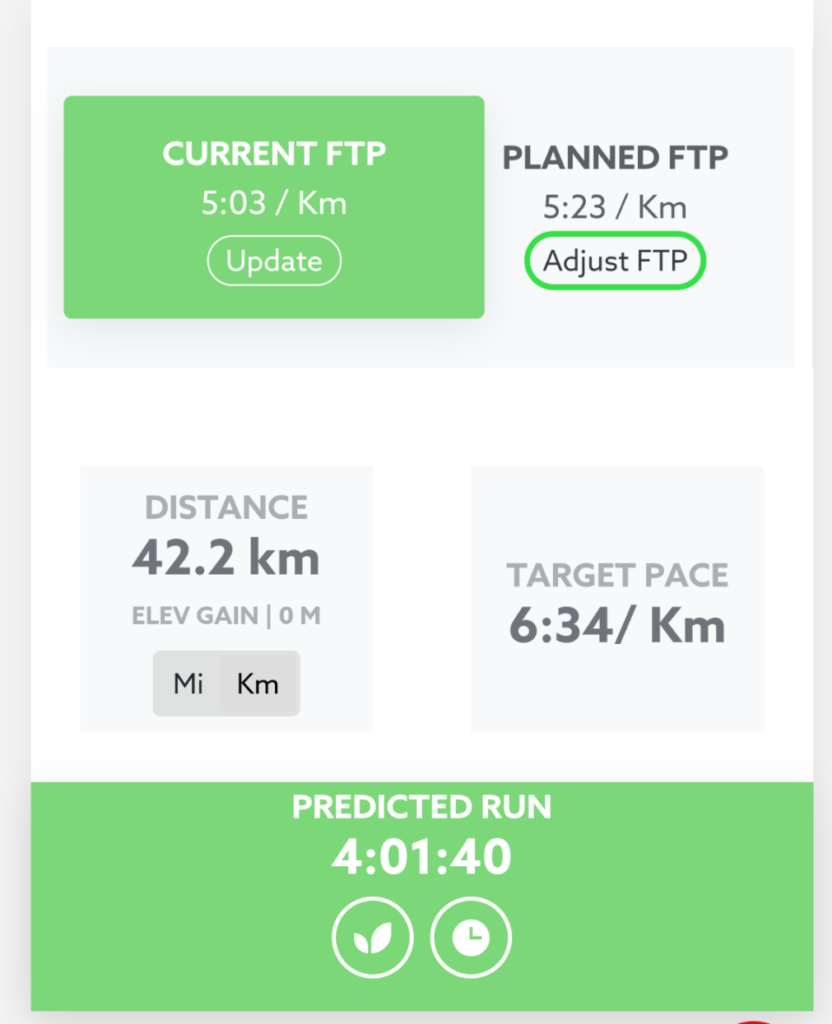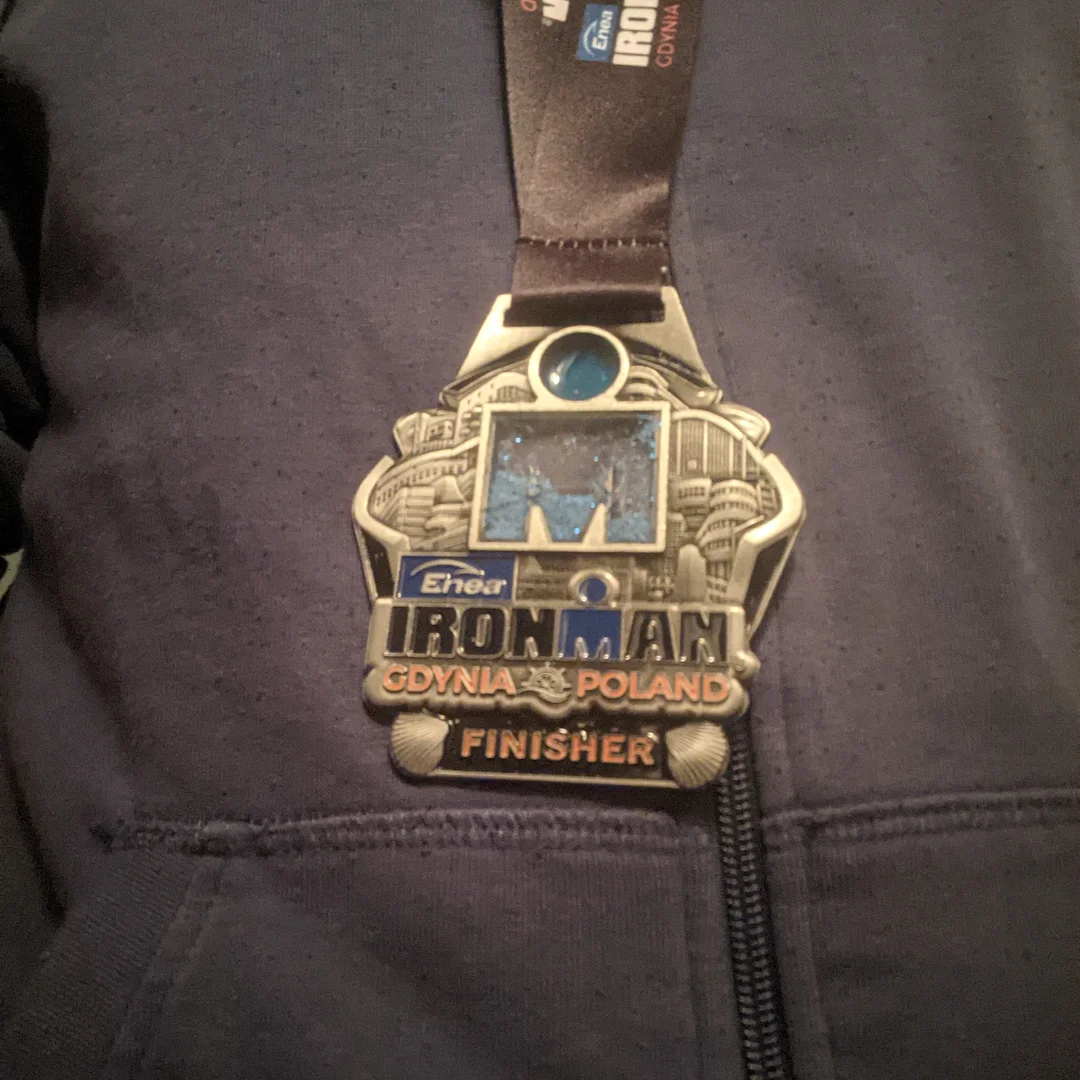The Race Report for Ironman Gdynia/Polen describes my experience on the day itself and also includes a short review of my preparation with the Tridot training system. Find out more about Tridot in previous posts, https://sportoverfifty.com/the-trainasone-experience/ and https://sportoverfifty.com/ironman-training-with-tridot/
Registration, Race Briefing and Bike check in
The registration was in the race village at the marina of Gdynia. Just around the corner of the city beach. A time slot had to be allocated online and a valid triathlon licence had to be purchased before the registration. On the day (Saturday) it was not possible to buy a licence and the entry and start would not be possible. I had everything and the registration was easy and fast. They checked my QR Code and handed me a bag with all the numbers, chip and some additional information for the course, rules etc.
The race briefing was only online and the race director went quickly through the rules and does and don’ts. At the end it was possible to ask/write some questions. For example, someone wanted to know if the potholes were clearly marked. “Yes, but not all. Only the really bad ones.” Another question was about the announced “PowerBar” bars on the bike course. “Yes there will be Power Bars on the course, but this is some translation problem from Polish to English. It will be a Bar, but a domestic brand.”
The briefing was around 20 min on facebook. Informative and long enough for me.
Checking in into the Transition Zone
Only athletes were allowed to enter the transition zone. I brought my bike, my two bags with the bike and running stuff. I hung my bike into the rack, rechecked the packs two times to make sure that I had the right gear in the right bag and hung them in the right racks.
Then I went through the stages, beginning with the exit from the swim. I imagined, while walking to the changing place, how I would open my wetsuit, pull out my arms, then take off the goggles and then the swim cap. Grabbing my cycle bag, getting out of the wetsuit completely, putting on the helmet. Taking out my shoes, sock and energy bars, putting in my wetsuit, hanging back the bag and running to the bike. The tri race suit I would already wear under the wetsuit. At the bike I would put on my socks and shoes, then grab my bike and run to the exit.
The next was to play through the steps after the bike ride. Hanging back the bike with the shoes left clipped in and running to the changing place with the running bag. Getting out my shoes, fresh socks, cap, number, gels. Putting back the helmet and the socks into the bag. Next jumping into socks and shoes, put on the number and cap. Hang back the bag and off I can go.
All this imaginary walkthrough with actually walking through the real transition zone took me around an half an hour. But it gave me the reassurance that I have thought at everything and that I can go relaxed to bed and sleep well.
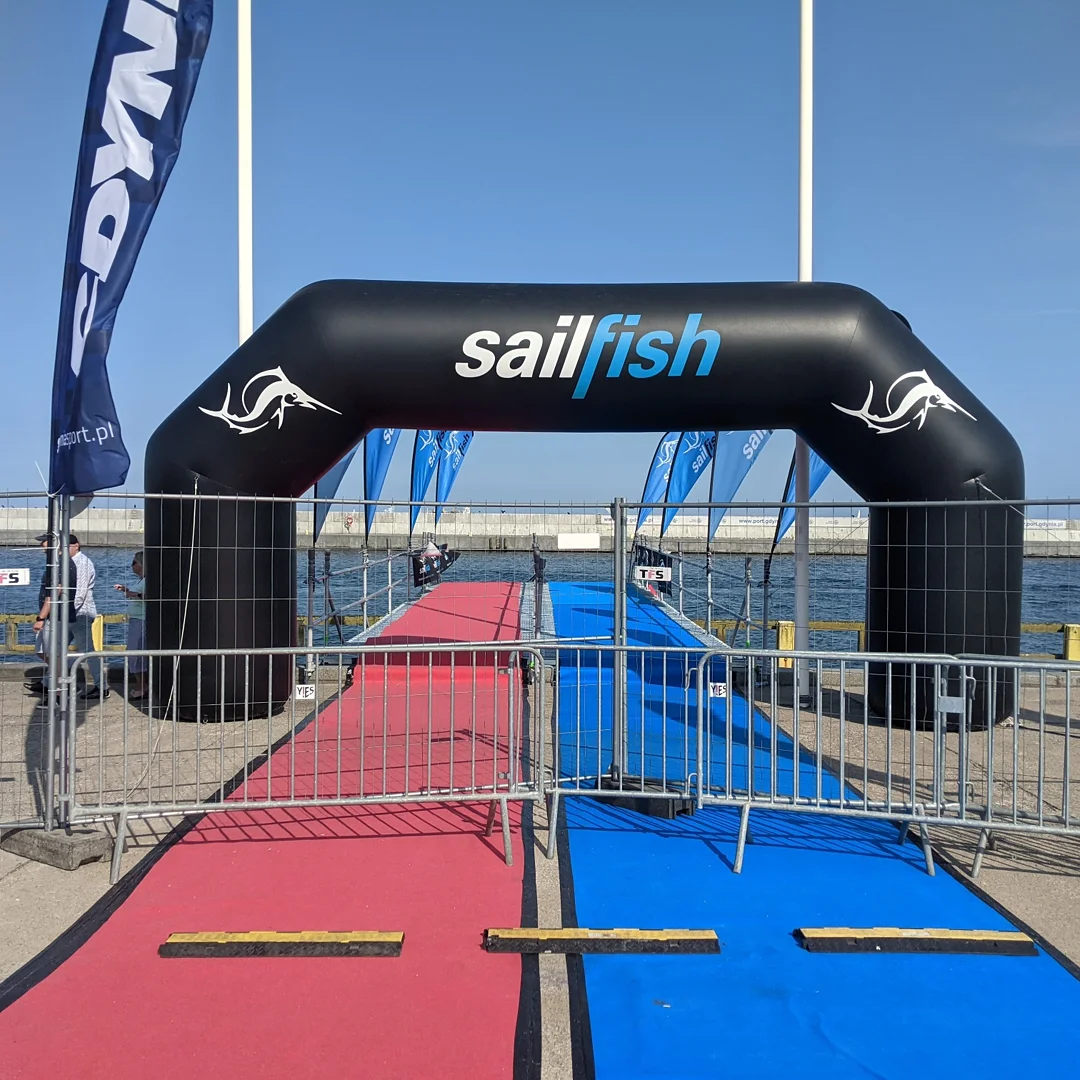
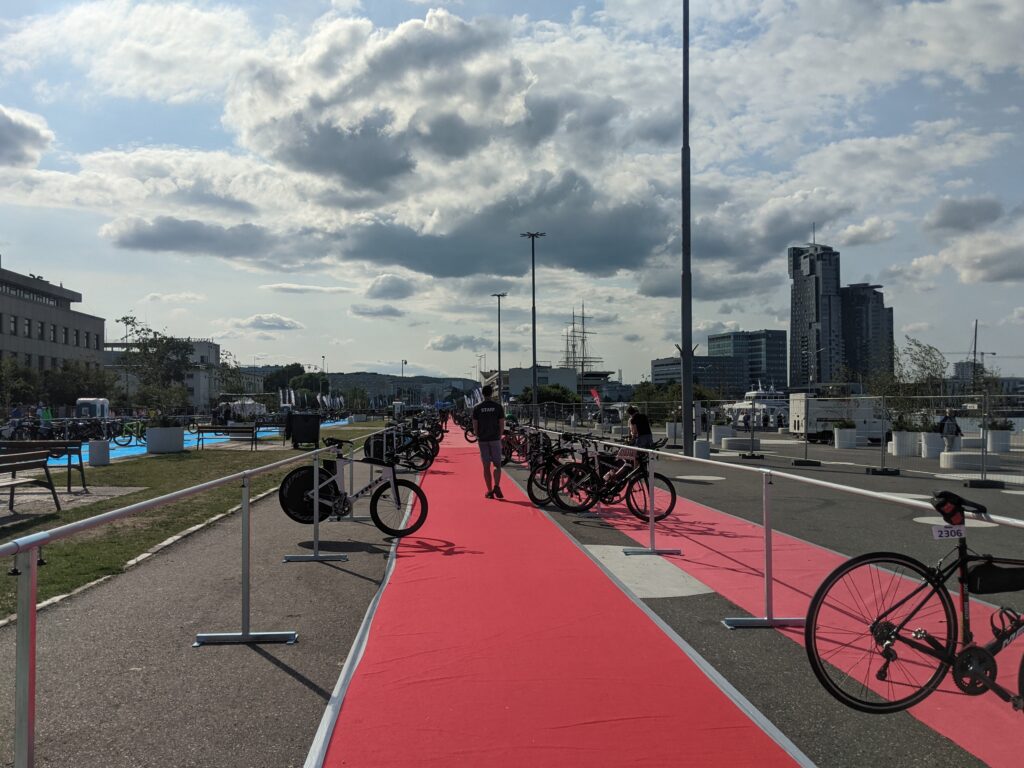
Swim (3.86km)
The swim start was at the main city beach of Gdynia. It was 7:00 am when the first 10 people ran into the 21°C warm Baltic sea. Neoprene where not mandatory, but recommended. Sure everyone had one on.
Every 8 sec 10 other people followed. Compared to a mass start, a rolling start is really relaxing. After a couple of minutes it was my turn to start and I tried to keep to the right to get some space and find my rhythm fast. This worked quite well. The sea was choppy, because of the wind (2-3 bft). It was raining, but in the water this doesn’t matter that much. Because of the waves, sighting of the boje was not easy. But I managed to swim straight, at least the GPS data shows this.
After 1.9km we had to get out of the water and run around a boje and then back into the water for the rest.
The field was wide spread over the course and I had enough space to swim comfortably.
One thing bothered me from the beginning. The transponder was attached to my ankle and somehow I had the feeling that I could lose this thing to the baltic sea. Fortunately this didn’t happen and after 1h24min I climbed out and ran into T1.
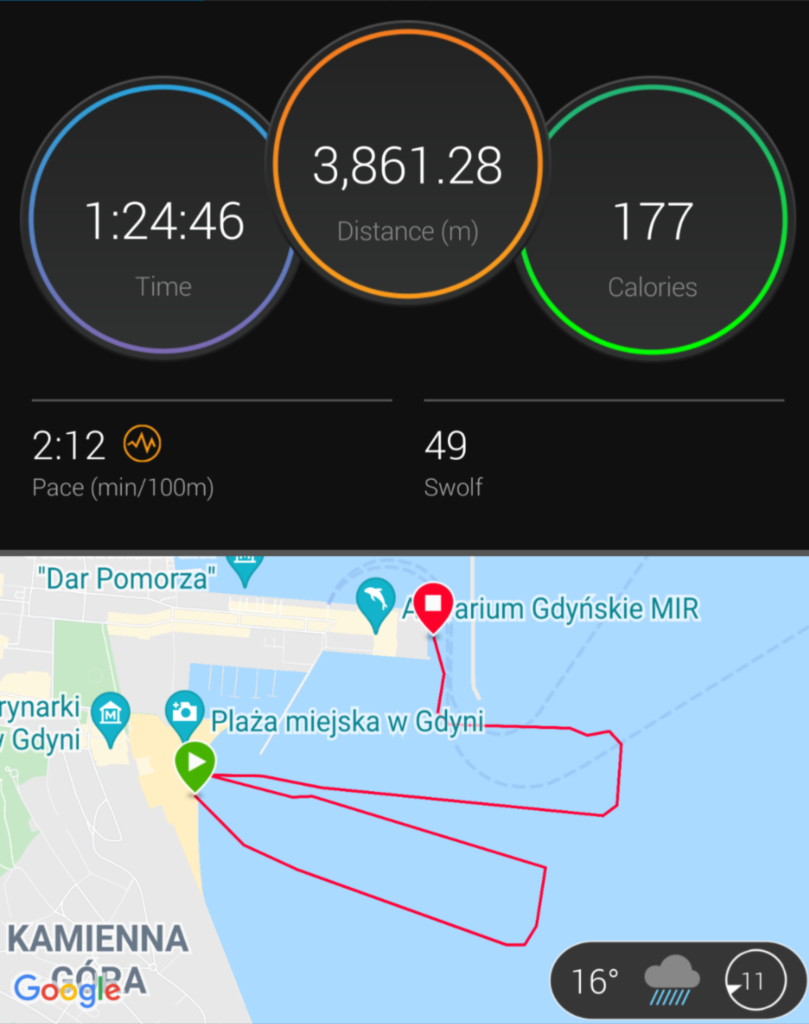
T1
It took me over 6 min to get out of T1. I had no problems getting off the neoprene or changing my clothes, but because of the long distance to the bike and the exit of the transition zone. Apart from that the transition onto the bike was smooth.
Bike (180km, 2 loops)
It was still raining a little bit, when I jumped onto the bike. The street were wet and slippery, so I took it easy around the corners. After a couple of km the course went out of the city and the first hill started. I took it even easier and tried to stay under 140 bpm. It was also the time to eat my first bar. 6 bars where in my pocket and I thought that would be enough.
After 20 km the two 70km loops startet and I felt very good. So far the surface was good and it didn’t rain anymore.
Rolling hills stands in the description of the bike course and soon I had to start shifting gears like never before. In addition the surface constantly changed and was sometimes really bad. In the race briefing the director said the worst parts will be clearly marked and so was it. On the approach of such a place, dozens of bottles were lying on the ground. Shaken out of the bottle cages.
On the first three nutrition station I took only water, but on the second loop I started to realize that I had not enough food. I started to take some bananas and then I wanted to try the polish “Power Bar”, which were no real PowerBars. Instead of a bar I good something wrapped into a paper. When I unpacked it, it was a white bread roll with ham, egg and tomato. I had a good laugh and ate it, which took quite some time.
The 20 km back to the city and the transition zone were quite easy. It was nearly only downhill on a good road and after some turns the transition zone was reached. I slipped out the shoes and jump off the bike and ran into T2.
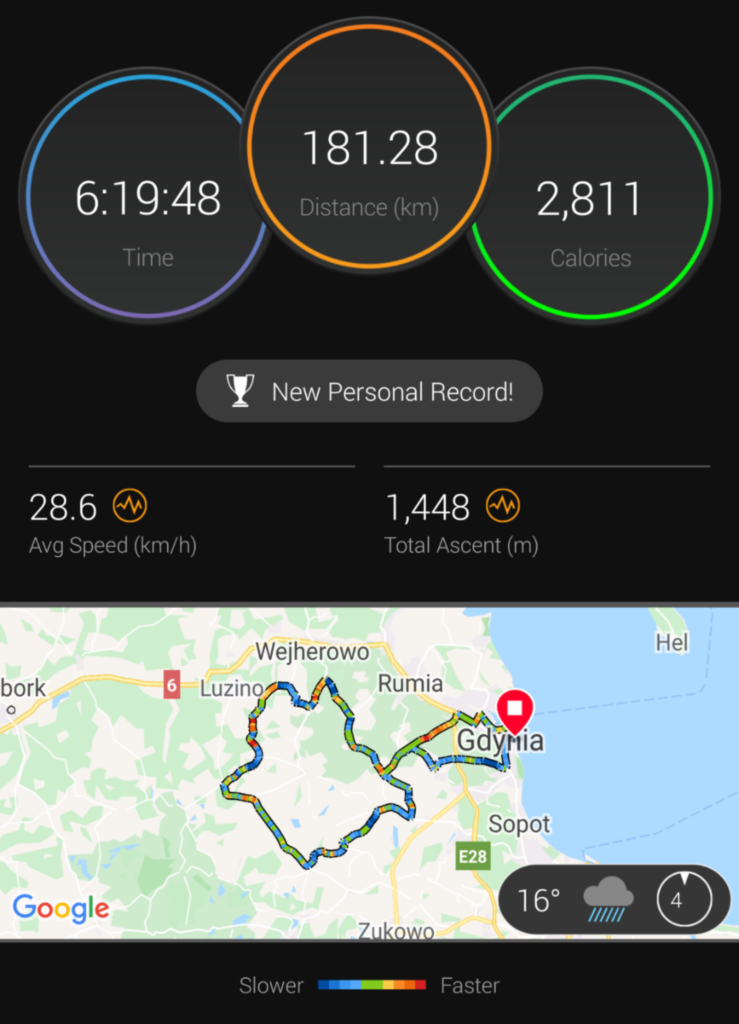
T2
Again it took me nearly 6 min to hang up my bike, run to the rack with my bag, put on some dry socks and finally the shoes. This went as smoothly and fast as possible. No problems here.
Run (42.2km, 4 loops)
I felt good and started out with my planned running speed at around 6:10 min/km. After a couple of hundred meters the course turned onto the main street and went slightly uphill. 30m elevation gain for 3km to the first turnaround and supply station. This doesn’t sound much, but I was running into a wall. The sun was out now and at around 25°C my struggle started. I had to slow down and was not able to pick up the speed again. Even before the first station I realized that I needed some electrolytes and some cooling for my head. Good that I took my cap with me. After refueling I felt a little bit better, but instead of running I could only jog. But at least I jogged. There were several other runners which passed me, then they walked, I passed them, then they passed me again and so on. This was quite funny for me. In the end I left them all behind.
At the four stations on the course I always took all the time to drink and eat a piece of a banana. After maybe 10 banana pieces I couldn’t eat one more. I still had one gel left in my pocket and in the last 5 km I finally decided to eat it, but this was already too late. At least I made it to the finish line in one piece. I had a long time to think about what I would do on the last meters on the carpet to the finish line. Maybe like Usain Bold, nope, I am not that fast anyway. Like Jan Frodeno with the finishband and his scream, nope there will be no finishband, when I come. Showing my six pack like Ronaldo, okay, there is no six pack forget it and it went on and on for hours. At the end I was glad that I could raise one arm over my head and that was it. I was done, but I finished.
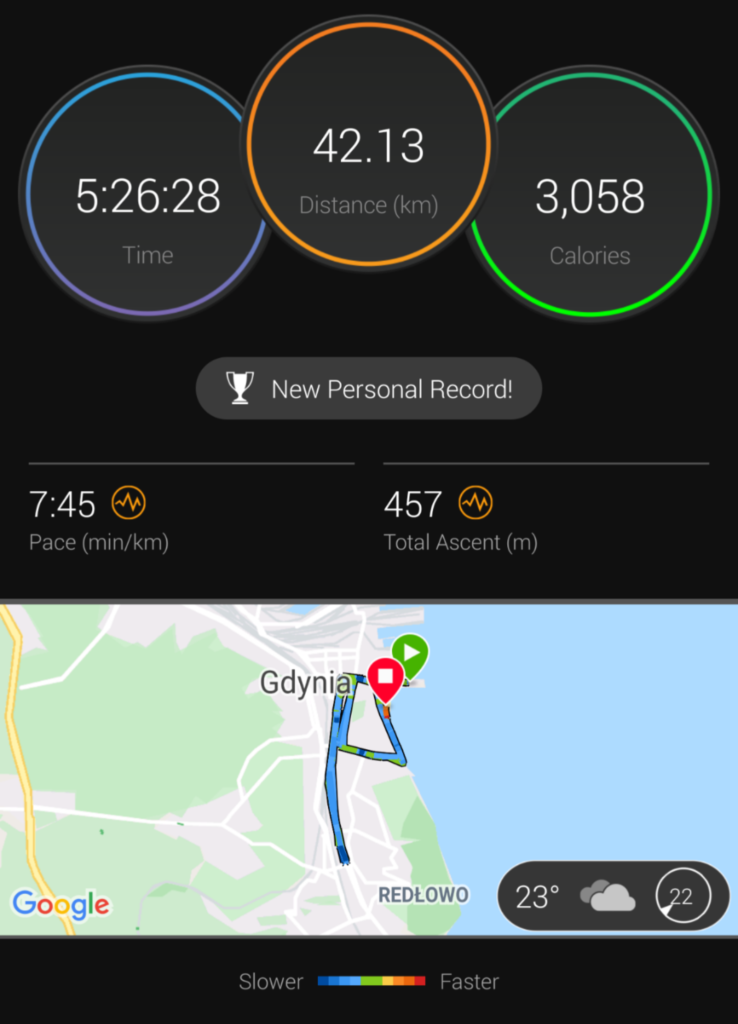
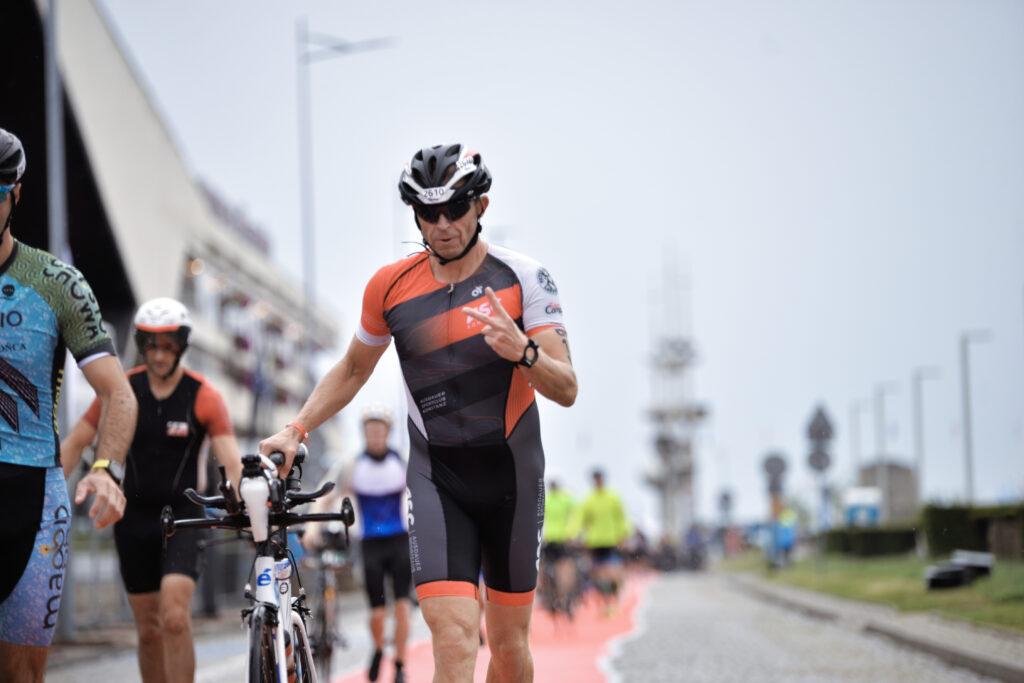
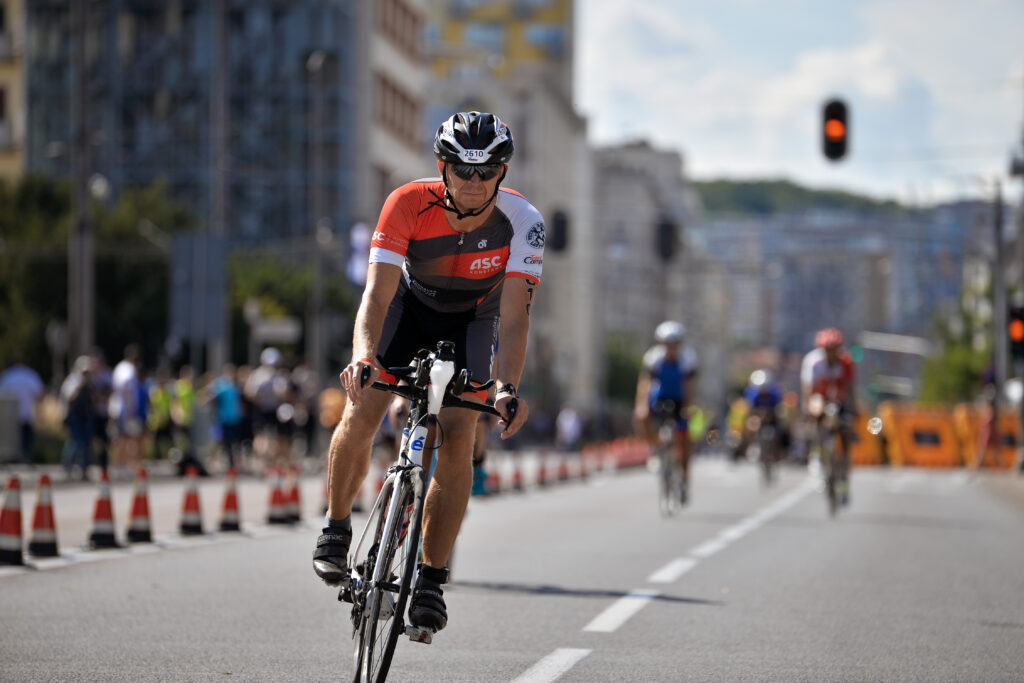
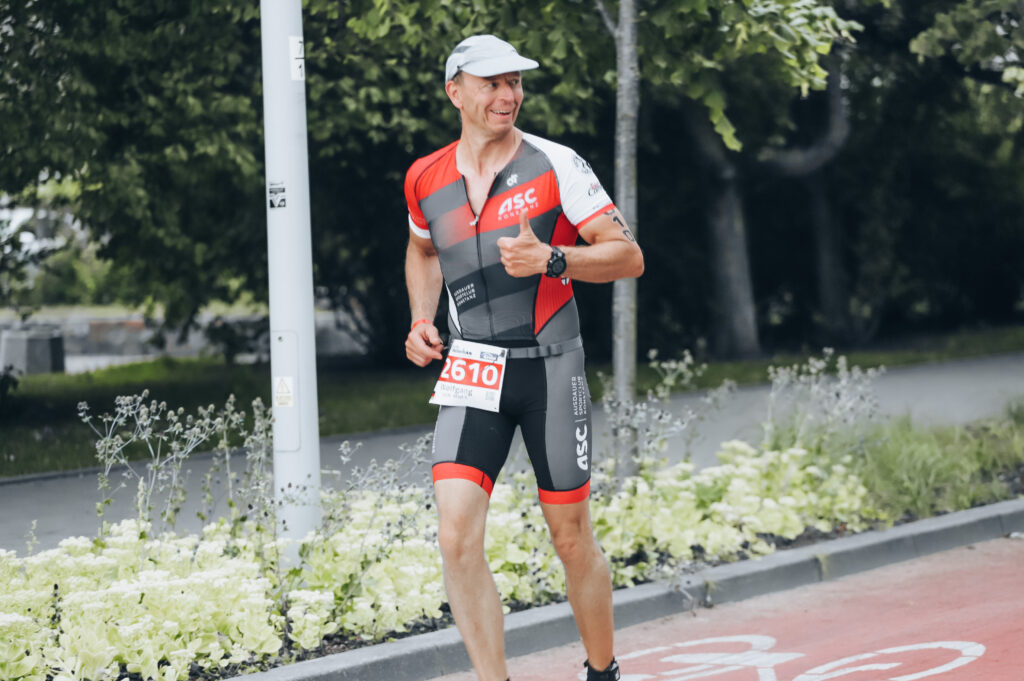
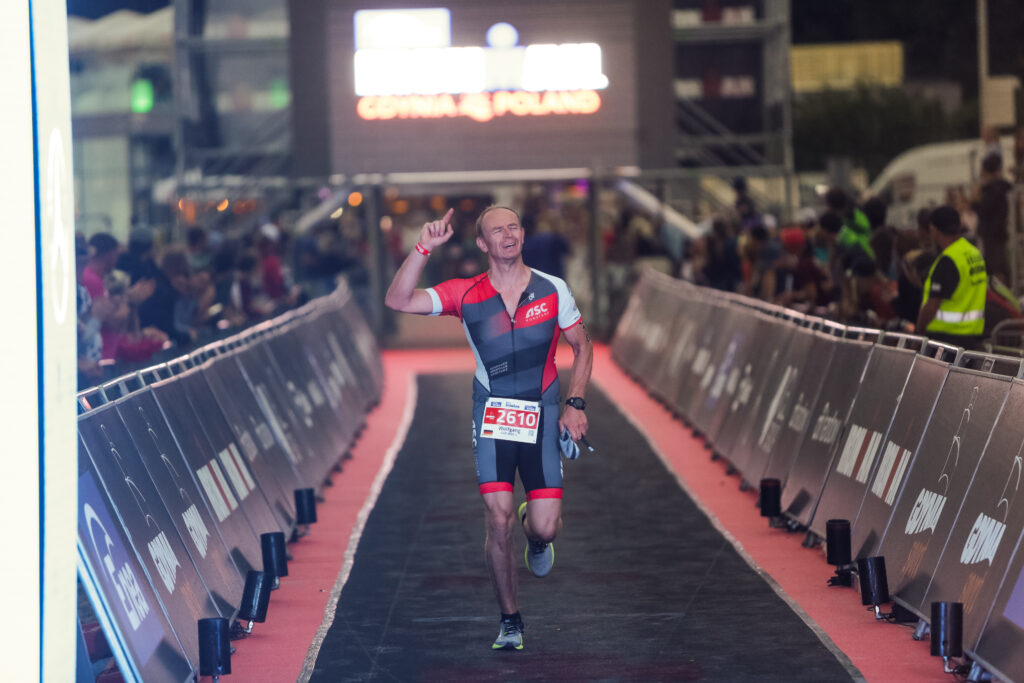
Tridot and Race X
I’m really satisfied with the training from Tridot. I liked the clear structure, the variety of the training and the progression through out the season. What I was sceptical about, was the running part of the training. There was nearly no runs longer than an hour. 1h30min was the longest scheduled run. Call it self fulfilling prophecy, but it was clear to me, that I will not be able to run the planned 6:34 min/km, which would result in a 4h37min marathon time. In the end I was nearly one hour slower.
To get the best result in a race, Tridot has invented RaceX. It take different parameters into account to give you a race execution plan with details (speed/power) in each discipline. And with this they claim to predict your race result on spot. Parameters are derived from all the data of the recorded training sessions, but also environment data like temperature, humidity, wind on race day and elevation of the course. The images below show the predictions and recommendations for my race day. Swimming and cycling was a perfect match, but as mentioned the running part I couldn’t fullfil. The prediction was even better with a 4h marathon time.
